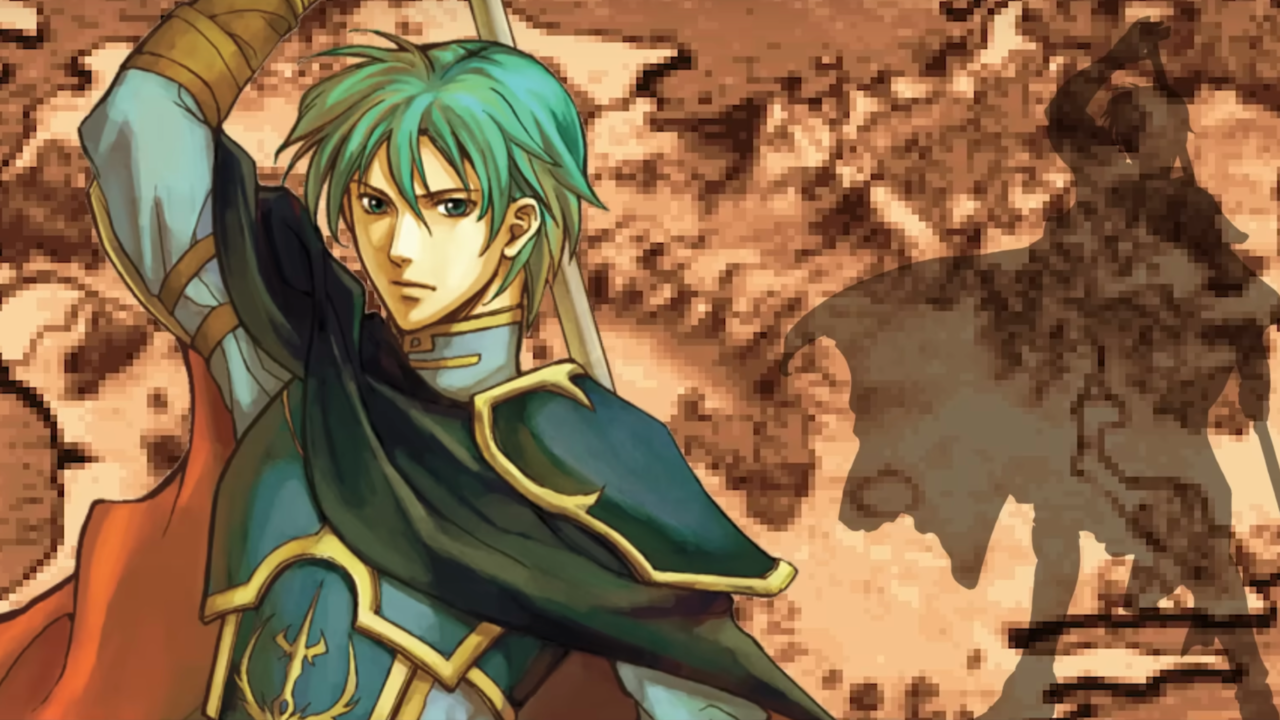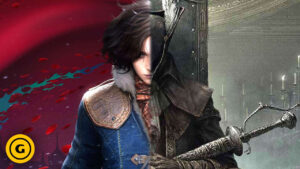Fire Emblem: The Sacred Stones is celebrating its 20-year anniversary today, May 23, 2025. Below, we look back at how its villains were unusually sympathetic, lending weight to the story.
It’s one of the most haunting scenes in any Fire Emblem game. A soldier and temporary king, Orson, is seen talking with the reanimated corpse of his wife, Monica. She only says one thing–“darling”–over and over again.
Orson, one of the many antagonists in Fire Emblem Sacred Stones, was a man devoted to Monica long before the campaign of the game began. He’s only present during a short part of the story, but he leaves a major impression once the credits roll after the game’s 30 chapters come to a close. While you’ll first meet him as a playable character, he eventually betrays Ephraim, Eirika, and the other heroes in order to (as he believes) save his wife’s life.
Even though this story plays out solemnly on a 2.5 inch Game Boy screen, it packs a punch that remains one of the most memorable parts of Fire Emblem: Sacred Stones. Orson’s tale, along with those of the other villains in Sacred Stones, exemplifies the type of personal story that sets the Fire Emblem series apart from other strategy games. It provides a personal, intimate look at enemies before we fight them on the battlefield.
Orson’s betrayal comes as a shock. When the idea of a turncloak hiding in Eirika and Ephraim’s forces is brought up by an enemy commander, it’s not immediately clear who he’s referring to. We find out when Orson tries to trick Eirika into handing over one of the keys to the games namesake, the sacred stones, while leading her right into the hands of the enemy. Then, he’s dismissed and nearly disappears from the story.
We see him nine chapters later in a terrible state, living for nothing but the reanimated corpse of his wife. We witness brief scenes where he brings her gifts and lashes out at the people around him for the mere act of interrupting their time alone. These moments are short, intimate looks at an unwound man who has forsaken everything in his life for the memory of his love. Our last look at Orson comes from combat dialogue right before he is killed.
“For the one I love, I betray everything,” Orson tells Eirika before they cross swords near the halfway point of Sacred Stone’s campaign. “My country, my lord and master… everything.”
While few would endorse his actions, it’s easy to understand why Orson made them. Laying the scene out before us–as unsettling as it is–puts him in the spotlight as if he was one of the games’ protagonists.
We get a similarly personal look at Lyon, the prince of Grado who serves as the secondary antagonist in Sacred Stones, that gives plenty of weight to his villainy. Like Orson, one of Lyon’s primary drivers is saving someone close to him through experimentation with dangerous magic. He uses the sacred stone, which is a seal that helps contain a powerful demon, to push healing magic, which isn’t known to help with grievous injuries in the world of Sacred Stones, further than it’s ever been pushed before.
“If I can just press my studies a little harder […] I think I might be able to use it to heal my father’s illness,” Lyon says at one point in the story. “If that works, there’s no telling how many other people I can help as well.”
As you might have guessed, Lyon’s experimentations backfire. He eventually loses control and is influenced by the demon sealed through the sacred stones, before being finally convinced that the only way to prevent a cataclysmic event is to free the demon.
We see the backstory of Lyon’s father sickness, his childhood relationships with Ephraim and Eirika, and his struggles with his poor health and lack of self-confidence throughout the game. Flashbacks, combat dialogue, and story sequences lay out the motivations of a ruler in complete despair.
Getting such a sincere look at the villain’s perspective is one way to convince us that Ephraim and his army aren’t just cutting down evil, faceless enemies. The scenes with Orson and Lyon throughout the campaign overshadow the fantastical demonic villain that enters the fray later on.
Fire Emblem is a franchise that wants you to care about the units you fight with and against. You’re not sending nameless soldiers to their deaths, you’re sending characters that you’ve recruited, trained with, leveled up, and grown closer to over the course of the game. It’s not uncommon for fans of the series to abort missions and start over as soon as one of their heroes falls on the battlefield. The thought of going on without them is too much.
Sacred Stones exemplifies this part of the franchise. Moulder, a gentle priest who acts as a father figure to other units and Joshua, a talented swordsman with an unhealthy obsession with gambling, are just two of the 30 units that you can learn about as you watch them interact with one another before each mission. Building out your go-to squad is like choosing which friends you want to spend time with over the course of the games’ story.
Orson and Lyon–villains that are only roadblocks in the path to the game’s main demonic antagonist–serve as sobering examples of villains who are tragically relatable. We see why they do what they do firsthand, giving them just as much of a story as any other character in the series.
Later Fire Emblem games have built on what entries like Sacred Stones established for the franchise. Fire Emblem: Engage and Fire Emblem: Three Houses gave us more ways to build relationships with our soldiers on the field. Few games, however, have given us an equally as disturbing look into what would drive good people to commit horrible crimes.









